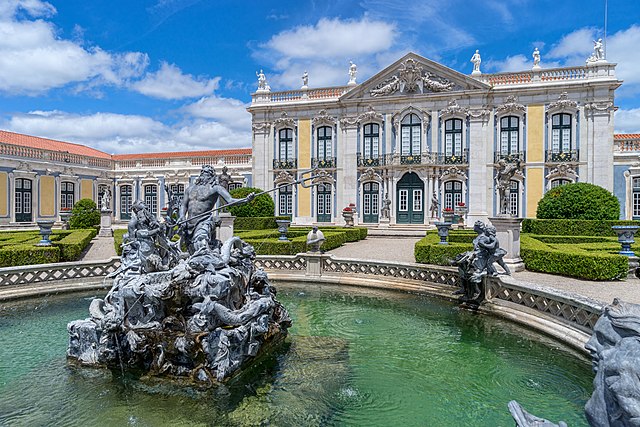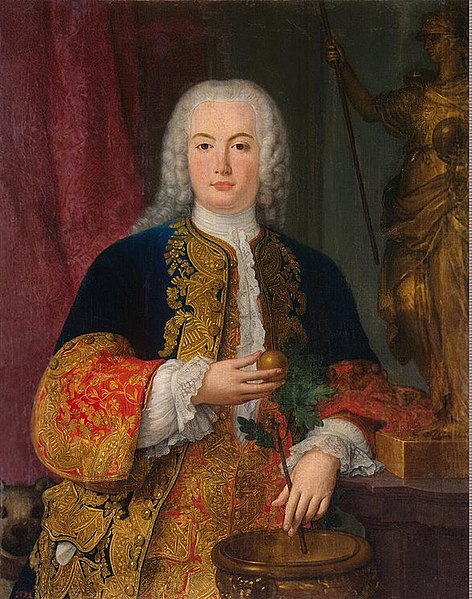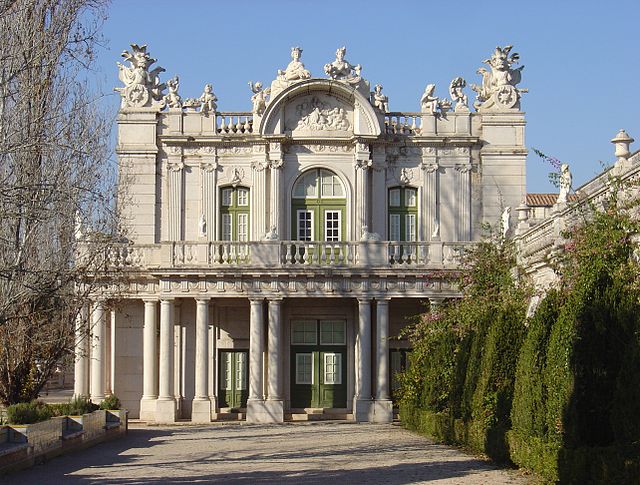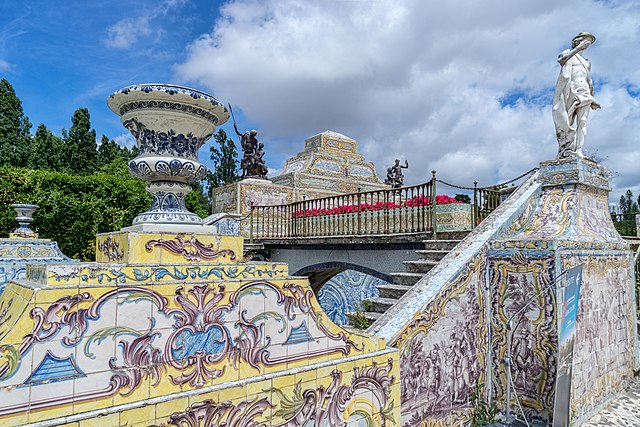The Palace of Queluz is an 18th-century palace located at Queluz, a city of the Sintra Municipality, in the Lisbon District, on the Portuguese Riviera. One of the last great Rococo buildings to be designed in Europe, the palace was conceived as a summer retreat for King José I's brother, Pedro of Braganza, later to become husband and king jure uxoris to his own niece, Queen Maria I. It eventually served as a discreet place of incarceration for Maria I, when she became afflicted by severe mental illness in the years following Pedro III's death in 1786. Following the destruction of Ajuda Palace by fire in 1794, Queluz Palace became the official residence of the Portuguese Prince Regent João, and his family, and remained so until the royal family fled to the Portuguese colony of Brazil in 1807, following the French invasion of Portugal.
The Palace of Queluz. The "Ceremonial Façade" of the corps de logis designed by Mateus Vicente de Oliveira.
The palace's public face to the town: the entrance from the cour d'honneur. Architecturally the most severe of the palace's many façades, it gives no hint of the architectural excesses beyond (see key 2).
Robillon's entrance is reached by flights of ingeniously designed steps adorned with statuary that employ forced perspective (see key 11).
Queluz is known for its gardens and their features, including the famous Fountain of Neptune.
Queluz is a city within the Sintra Municipality, on the Portuguese Riviera, in the Lisbon metropolitan area of Portugal. It is famed as the home of Queluz National Palace, the 18th century pleasure palace of the Portuguese Royal Family, as well as notable institutions like the Portuguese School of Equestrian Art. Queluz had a population 78,273 inhabitants in 2001.
Queluz National Palace.
King Pedro III of Portugal built Queluz National Palace.
The Portuguese School of Equestrian Art is based in Queluz.
Queluz is famed for its gardens.








